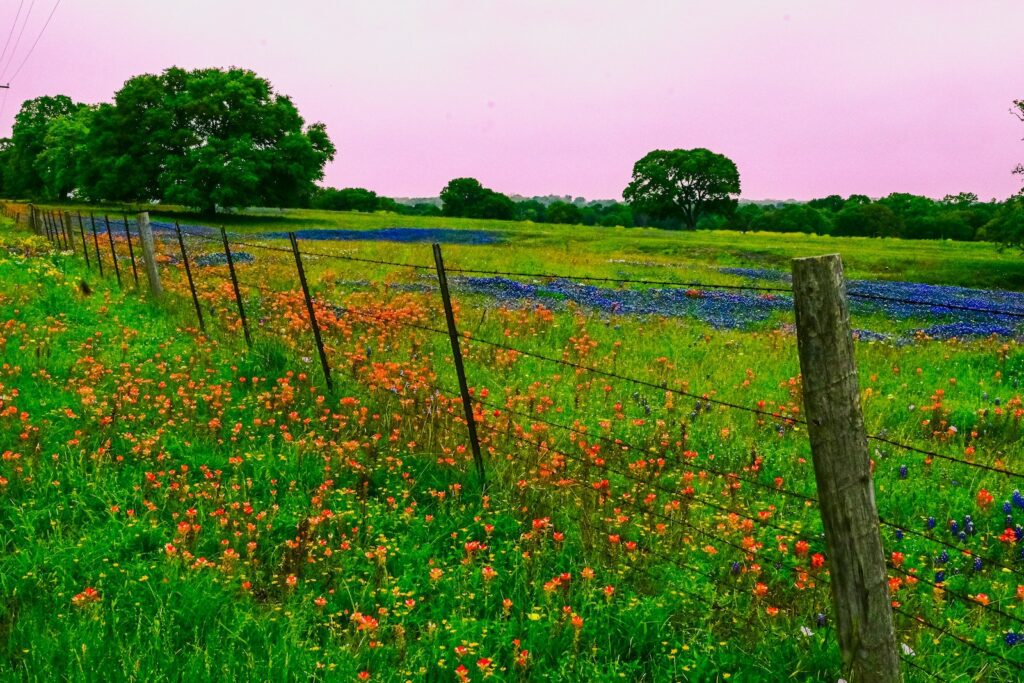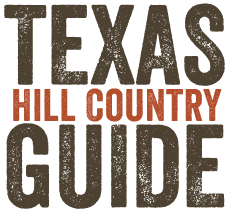
Wildflower blooms are a spectacular sight to behold, and the Texas Hill Country is one of the best places to experience them. The region is known for its stunning wildflower displays, with an abundance of bluebonnets, Indian paintbrush, and other native flowers covering the countryside. The wildflower season in the Hill Country typically runs from March through May, with peak bloom times varying depending on weather conditions.
Visitors to the Hill Country during the wildflower season can expect to see a vibrant display of colors and textures. Bluebonnets, the state flower of Texas, are a common sight, with fields of these iconic blooms stretching as far as the eye can see. Other wildflowers that can be found in the region include Indian paintbrush, coreopsis, phlox, and beebalm. The Lady Bird Johnson Wildflower Center in Austin is a great place to see a wide variety of native Texas plants in bloom, including claret cup cactus, red yucca, and Carolina larkspur.
The Beauty of Spring
Spring is a magical time in Hill Country, Texas. The season brings an explosion of color and life to the area, with wildflowers blooming in full force. Here are some of the highlights of the spring wildflower season in the Hill Country.
Blooming of Bluebonnets
The bluebonnet is the state flower of Texas and is one of the most iconic wildflowers in the Hill Country. The bluebonnet typically blooms in early March and can be seen along roadsides, in fields, and in parks throughout the area. These beautiful blue flowers are a sight to behold and are a must-see for anyone visiting the Hill Country in the spring.
Presence of Indian Paintbrush
Another stunning wildflower that blooms in the Hill Country during the spring is the Indian Paintbrush. These vibrant red and orange flowers can be seen growing alongside bluebonnets and other wildflowers, creating a stunning contrast of colors. Indian Paintbrushes typically bloom in March and April and are a common sight in the Hill Country during the spring.
Variety of Other Spring Wildflowers
While bluebonnets and Indian Paintbrushes are the stars of the spring wildflower season in the Hill Country, there are many other beautiful wildflowers that bloom during this time. Some of the other wildflowers you can expect to see include verbena, phlox, buttercups, and ranunculus. These wildflowers come in a variety of colors, including pink, purple, yellow, and white, and can be seen growing in fields, along roadsides, and in parks throughout the Hill Country.
In conclusion, the beauty of spring in the Hill Country is truly a sight to behold. The explosion of color and life that comes with the wildflower season is a testament to the beauty of nature and is a must-see for anyone visiting the area. Whether you’re a nature lover or just looking for a beautiful place to visit, the Hill Country in the spring is not to be missed.
The Allure of Hill Country
The Texas Hill Country is a popular destination for nature lovers, especially during the wildflower season. The region’s diverse landscape, including rolling hills, limestone cliffs, and winding rivers, provides a stunning backdrop for wildflower blooms. Visitors can explore the area’s charming towns, scenic highways, and natural attractions while enjoying the beauty of the wildflowers.
Exploring Austin and Fredericksburg
Austin, the state capital, is a great starting point for exploring the Hill Country. The Lady Bird Johnson Wildflower Center, located in southwest Austin, is a must-visit destination during the wildflower season. The center showcases a variety of native Texas plants, including wildflowers, cacti, and succulents. Fredericksburg, located about an hour west of Austin, is another popular destination for wildflower enthusiasts. The town’s German heritage, charming downtown, and proximity to natural attractions make it a great place to base oneself while exploring the Hill Country.
Venturing the Willow City Loop
The Willow City Loop, located near Fredericksburg, is a scenic drive that is especially popular during the wildflower season. The 13-mile route takes visitors through rolling hills, pastures, and creeks, providing ample opportunities to view wildflowers. The Loop is also known for its stunning views of Enchanted Rock, a massive pink granite dome that is a popular hiking destination.
Traveling Other Scenic Highways
The Hill Country is home to several scenic highways that are worth exploring during the wildflower season. Highway 290, which runs from Austin to Fredericksburg, is a popular route that passes through several small towns and offers stunning views of the countryside. Highway 16, which runs from San Antonio to Fredericksburg, is another scenic route that takes visitors through the heart of the Hill Country. Highway 29, which runs from Georgetown to Mason, is a less-traveled route that offers a quieter, more peaceful drive through the Hill Country.
In conclusion, the allure of the Hill Country during the wildflower season is undeniable. Visitors can explore charming towns, scenic highways, and natural attractions while enjoying the beauty of the wildflowers. Whether you’re a nature lover, a history buff, or just looking for a peaceful getaway, the Hill Country has something to offer everyone.
The Influence of Lady Bird Johnson
Lady Bird Johnson, the wife of President Lyndon B. Johnson, is a notable figure in the history of Texas wildflowers. She was passionate about the preservation and conservation of native plants and worked tirelessly to beautify America’s highways by encouraging wildflower planting and junkyard screening. Her efforts have had a lasting impact on the state’s landscape and continue to inspire conservation efforts to this day.
The Wildflower Center
Lady Bird Johnson was a co-founder of the Lady Bird Johnson Wildflower Center, formerly known as the National Wildflower Research Center. The center was established in 1982 and is located in Austin, Texas. Its mission is to protect and preserve North America’s native plants and natural landscapes. The Wildflower Center is a botanical garden that features a wide variety of native plants, including wildflowers, trees, and shrubs. Visitors can learn about the importance of conservation and the role that native plants play in maintaining healthy ecosystems.
Conservation Efforts
Lady Bird Johnson’s conservation efforts were influential in the passing of the Highway Beautification Act of 1965. This act regulated outdoor advertising and required the removal of certain types of billboards. It also encouraged the planting of wildflowers and other native plants along highways and roadsides. Lady Bird Johnson’s efforts helped to transform Texas highways into beautiful and ecologically diverse landscapes.
In addition to her work with the Wildflower Center and the Highway Beautification Act, Lady Bird Johnson also established the National Park Foundation and the Lady Bird Johnson Park in Texas. These initiatives have helped to preserve and protect natural areas for future generations.
Overall, Lady Bird Johnson’s legacy is one of conservation and environmental stewardship. Her efforts have had a lasting impact on the state of Texas and continue to inspire conservation efforts across the country.
Wildflower Blooms in Other Seasons
Fall and Winter Blooms
While spring is the peak season for wildflower blooms in Hill Country, there are still plenty of flowers to see in the fall and winter months. Some of the most common flowers you can see during this time are firewheels, winecups, and coreopsis. These flowers typically bloom from September to November and can be found in fields and along roadsides.
Another popular flower to see during the fall and winter months is the Mexican poppy. These bright orange flowers bloom from November to February and can be found in dry, rocky areas. Horsemint is another flower that blooms in the fall and winter months. This flower is known for its strong scent and can be found in fields and along roadsides.
Native Plants Throughout the Year
There are also many native plants that bloom throughout the year in Hill Country. One of the most well-known native plants is the mountain laurel. This plant blooms in late winter and early spring and is known for its fragrant purple flowers.
Other native plants that bloom throughout the year include the agarita, Texas persimmon, and the sotol. These plants can be found in various habitats throughout Hill Country, including rocky hillsides and dry, sandy areas.
If you’re interested in seeing wildflowers and native plants throughout the year, be sure to visit Wildseed Farms. This working wildflower farm has over 200 acres of flowers and plants to explore. The Wildflower Market Center is open year-round and offers a wide selection of wildflower seeds, gardening tools, and gifts.
Touring the Wildflower Trails
If you’re planning a road trip to Hill Country during wildflower season, you’re in for a treat. From late March to early May, the fields and roadsides burst with colorful blooms, including the state flower of Texas, the bluebonnet. Here are some tips for experiencing the best of the wildflower displays.
Planning Your Road Trip
Before hitting the road, check out the wildflower routes recommended by TXDOT. These routes are updated regularly and offer the best chance of seeing the most vibrant blooms. You can also find information about wildflower displays and events at McKinney Falls State Park and the Lady Bird Johnson Wildflower Center.
Keep in mind that wildflower season is a popular time for visitors, so expect crowds and plan accordingly. If possible, try to visit during the week and avoid weekends and holidays. Don’t forget to pack sunscreen, a hat, and plenty of water for your trip.
Experiencing the Bluebonnet Festival
If you’re a fan of bluebonnets, make sure to attend the Bluebonnet Festival in the bluebonnet capital of Texas, Chappell Hill. This annual festival takes place in April and features live music, arts and crafts, food vendors, and of course, plenty of bluebonnets.
Respecting Private Properties
While enjoying the wildflower trails, it’s important to respect private property. Many of the fields and roadsides where wildflowers grow are on private land, so make sure to stay on designated trails and avoid trampling on the flowers. If you want to take photos, ask for permission from the landowner first.
By following these tips, you can experience the joy of touring the wildflower trails in Hill Country while also respecting the residents and private properties.
Experiencing the Local Culture
When you visit the Texas Hill Country during wildflower season, there’s more to do than just admire the blooms. Take some time to experience the local culture by enjoying live music and camping, visiting Llano and Burnet, and sampling local wineries.
Enjoying Live Music and Camping
The Texas Hill Country is known for its vibrant music scene, and there’s no better way to experience it than by attending a live show. Many bars and restaurants in the area offer live music performances, and you can also find outdoor concerts and festivals throughout the spring and summer months.
If you’re looking for a unique camping experience, consider staying at one of the many campgrounds in the Hill Country. You can sleep under the stars and wake up to the beautiful wildflowers in the morning. Some campgrounds even offer live music performances and other activities.
Visiting Llano and Burnet
Llano and Burnet are two charming towns in the Texas Hill Country that are worth a visit during wildflower season. Llano is known for its beautiful courthouse square, which is surrounded by historic buildings and offers plenty of shopping and dining options. Burnet, on the other hand, is famous for its Bluebonnet Festival, which takes place every Easter weekend.
Sampling Local Wineries
The Texas Hill Country is home to many award-winning wineries, and sampling some of the local wines is a must-do activity during wildflower season. Many wineries offer tastings and tours, and you can also enjoy live music and other events at some of the larger wineries.
Overall, experiencing the local culture in the Texas Hill Country during wildflower season is an unforgettable experience. Whether you’re enjoying live music and camping, visiting Llano and Burnet, or sampling local wineries, there’s something for everyone to enjoy.
The Role of Wildflowers in the Ecosystem
Wildflowers play a crucial role in maintaining the health and balance of ecosystems. They are not only beautiful to look at but also provide essential benefits to the environment. In this section, we will explore the role of wildflowers in the ecosystem, including how they attract bees and other pollinators and contribute to flora diversity.
Attracting Bees and Other Pollinators
Wildflowers are essential in supporting the survival of bees and other pollinators. Bees are responsible for pollinating a significant portion of our food supply, and without them, our ecosystem would suffer. Wildflowers provide bees with a source of nectar and pollen, which they need to survive and reproduce. By attracting bees, wildflowers help to ensure that the plants and crops that rely on pollination will continue to thrive.
Contributing to Flora Diversity
Wildflowers also contribute to the diversity of flora in an ecosystem. They provide a habitat for a range of plants and animals, which helps to maintain a healthy balance in the ecosystem. Native plants, in particular, play a crucial role in supporting the local environment. They have adapted to the local climate and soil conditions and are better able to withstand the challenges of the environment. By planting native wildflowers, we can help to preserve the local ecosystem and support the survival of the local flora and fauna.
In meadows, wildflowers are especially important. They help to prevent soil erosion and provide a habitat for a range of animals, including insects, birds, and small mammals. Meadows that are rich in wildflowers are also more resistant to invasive species, which can threaten the health and balance of the ecosystem.
In conclusion, wildflowers play a vital role in maintaining the health and balance of ecosystems. They attract bees and other pollinators, which are essential for the survival of many plants and crops. They also contribute to the diversity of flora in an ecosystem and provide a habitat for a range of animals. By planting native wildflowers and supporting the preservation of meadows, we can help to ensure the long-term health and sustainability of our environment.



